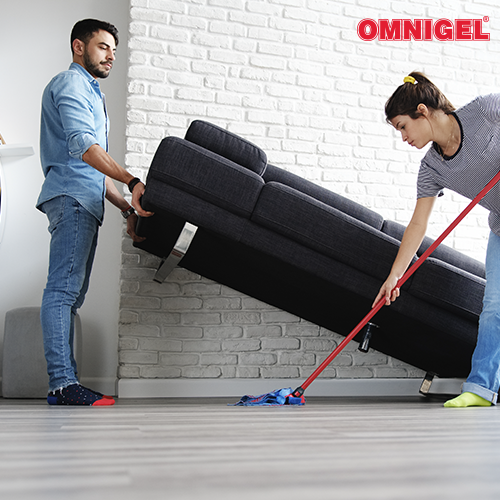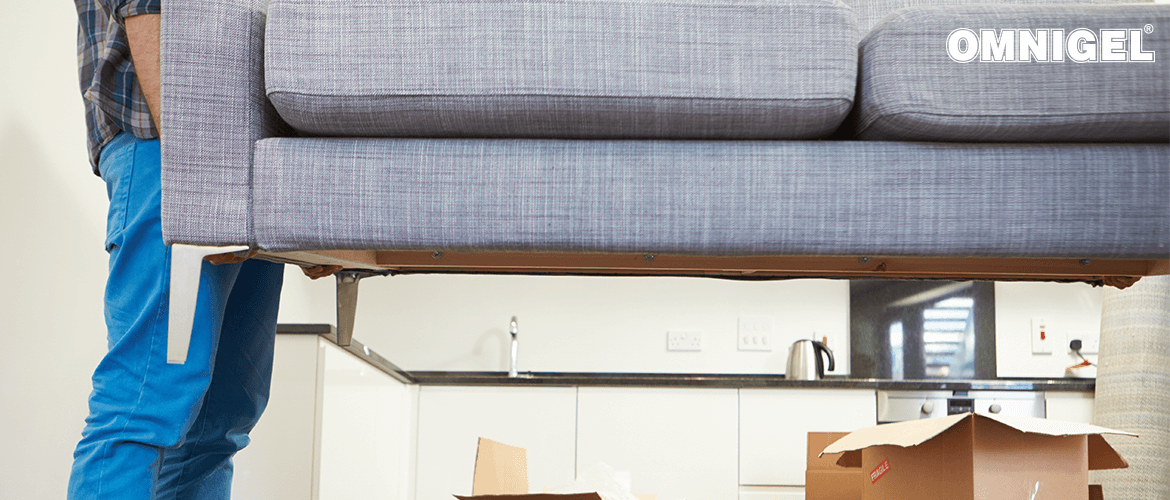Lifting heavy objects can set off all kinds of aches and pains if you don’t do it right. Whether you’re moving heavy objects at work or are in the midst of a home renovation and have to lift heavy furniture, knowing how to properly lift heavy objects can really help.
Here are a few moving safety tips that can prevent those unwanted strains, sprains, and aches and pains!
How to Properly Lift Heavy Objects

Once you learn the correct way to lift heavy objects, you’ll wonder why you never did it this way before!
- Think it through: Before you attempt moving heavy objects by yourself, ask yourself if you can safely move it alone. If not, it may be better to wait until you have someone else to help. If it is a package with multiple components, check if the load can be lightened by removing some heavier components from inside and carrying them each separately.
- Know your goal: Be clear on where you are taking the object and whether you’ll be able to do it in one stretch or need a rest stop mid-way or multiple breaks in between to lay it down.
- Clear the path: If there is anything that’s in the way, move it out. Ensure the place you need to lay down the heavy object is also clear of obstructions.
- Stand close to the object and kneel: Begin by getting as close to the object as possible. If the object is below waist level, you’ll need to bend to pick it up. To do this always kneel first so that one knee is down on the floor for added support as you rise. Never attempt to do this while standing by bending over at your waist and locking your knees. Alternatively, you could also squat and lift the object.
- Get your stance right: Keep your feet apart – one leg should be a little ahead of the other to help you keep your balance.
- Bend your knees, never your back: Regardless of what position you are in during the process, try and make the legs bear the load and don’t twist your back awkwardly during the lift. Ensure the natural curve of your lower back is maintained at all times.
- Use your core (and keep breathing) as you lift: Engage the muscles in your back, pelvis, and abdominal area to help with the lift. Keep breathing normally throughout to avoid tensing up muscles.
- When you need to turn, pivot on your feet: Do not attempt to turn and place the object to your right or left by twisting your torso.
- Carry the object close to your body: This keeps it near your center of gravity, making it easier to carry and reducing balance issues. If it has handles or something you can hold onto firmly, use that to get a better grip.
- Look ahead while carrying the object and not down at it.
- Keep your movements smooth throughout.
- Be careful while setting the load down: Keep your feet pointed in the direction of the load you are carrying. Bend down from your knees with the back straight and put the load down. If you have a location to lay it down halfway to the ground, that can help ease the setting down process by splitting it into two steps.
What to Do If Your Body Feels Sore
Despite being careful and learning the proper way to lift heavy objects you may still experience some aches and pains from all the heavy lifting. For instant pain relief, try Omnigel. Available as a gel and spray, this topical remedy acts within minutes, relieving you of any pain in your muscles and joints. It also eases any stiffness or inflammation that you may notice the next day – so don’t hesitate to use it. Omingel is available over the counter with no prescription required which makes it a popular solution to everything from back and neck pain to a remedy for a stiff shoulder or knee pain.
Take a little extra care the next time you need to move a heavy object, and remember, if things don’t go as planned – Omnigel has your back.

